Powered by tiny water droplets, water mist fire protection systems have some benefits and disadvantages compared to conventional fire sprinkler systems
While fire sprinkler systems have worked on the same principles for more than a century, a novel approach to fire protection has gained traction over the past 20 years: the water mist sprinkler system. Installers won’t find water mist systems in NFPA 13, the most widely-used set of rules for commercial fire sprinkler systems. Instead, water mist systems follow an entirely different set of manufacturing and installation standards.
In this article, we look at water mist systems, explaining how they work, along with their types, usage, and maintenance.
Looking for components for your water mist system? Contact us +1 (888) 361-6662 or email support@qrfs.com for information on purchasing specific parts. Otherwise, shop our selection of pipe hangers and accessories that work for some low-pressure, light-hazard systems, as well as CPVC fittings and test and drain valves.
Small droplets provide temperature control and remove oxygen to fight fires
Fire requires three elements to burn: heat, oxygen, and flammable material to serve as fuel. Most fire sprinkler systems put out or slow the growth of fires by drenching them and the surrounding area with water, removing heat and potential fuel sources. In contrast, water mist systems work by both cooling the room temperature and displacing oxygen with steam.
Like other fire protection systems, water mist systems do use water, with one key difference: smaller droplets. According to the National Fire Protection Association (NFPA), “water mist” consists of droplets with a diameter less than 1,000 microns (1 millimeter) each. That’s roughly a fifth of the size of the droplets made by standard fire sprinkler systems.
By spraying large numbers of tiny droplets, water mist fire protection systems create a large water surface area that can more readily lower temperatures. When these tiny droplets meet hot air, they evaporate and turn to steam. Steam can absorb more heat per unit of time than larger water droplets, therefore reducing the temperature of the flames faster. Steam also displaces the oxygen in the room so that the fire is suffocated and extinguished.
Water mist fire protection emerged as an alternative to gaseous fire extinguishing agents and became more popular after the manufacturing of Halon, a widely-used gas agent, was banned by the U.S. Environmental Protection Agency. Since 1996, NFPA’s rules for water mist systems have been available in NFPA 750: Standard on Water Mist Fire Protection Systems.
Water mist fire protection systems vary in design and purpose
All water mist systems create fine sprays using water. Some, called “single-fluid” systems, use only water. Others use a hybrid of water and air or nitrogen, called “atomizing media,” to create smaller droplets. These systems are classified as “twin-fluid” systems.
Each water mist system is designed with one or more of the following objectives:
- Extinguishing fires (leaving no burning combustibles)
- Suppressing fires (reducing the rate of heat release)
- Controlling fires (limiting the fire’s size and ceiling temperatures)
- Controlling temperatures
- Protecting against exposure to fire
NFPA 750 describes ten different types of water mist systems. All are variations on standard fire sprinkler systems, including wet-pipe, dry-pipe, deluge, and preaction systems. (Click here for a refresher on basic fire sprinkler system types, including dry-pipe, wet-pipe, deluge, and preaction systems.) In turn, water mist systems have one of four applications:
- Local-application water mist systems, which spray directly on a specific object or hazard.
- Occupancy protection systems, which are installed throughout a building or a portion of a building.
- Total compartment application water mist systems. All nozzles (sprinkler heads) activate at the same time, providing complete protection of an enclosure or space.
- Zoned application systems, a variation on total compartment application systems, activate throughout a given zone or region within a given space.
Even these systems can be roughly divided into three more types: low-pressure systems, intermediate-pressure systems, and high-pressure systems. Low-pressure systems endure pressures similar to standard fire sprinkler systems—175 PSI or less. Intermediate-pressure systems have pressures between 175 PSI and 500 PSI, while high-pressure systems exceed 500 PSI.
Finally, water-mist systems may be broken into types depending on how they’re designed. For pre-engineered water mist systems, testing laboratories and manufacturers prescribe the number and type of pipes, fittings, and sprinkler heads required. On the other hand, engineered water mist systems require designers to account for flow rates, nozzle pressures, and other factors to create a specially-designed set-up suitable for the hazards of a particular environment.
Water mist systems control fires in an impressive range of industries
In Annex A, NFPA 750 explains that water mist systems can control a variety of fires in three major fire classes: Class A (ordinary combustible), Class B (flammable liquid), and Class C (electrical fires). However, installers must again carefully consider a range of factors, including the system’s goals and major fire hazards present in the space
Gas jet fires, electrical hazards, and railway tunnels may all benefit from water mist systems. They can even protect artwork, as they do today at the National Gallery of Art in Washington, D.C.
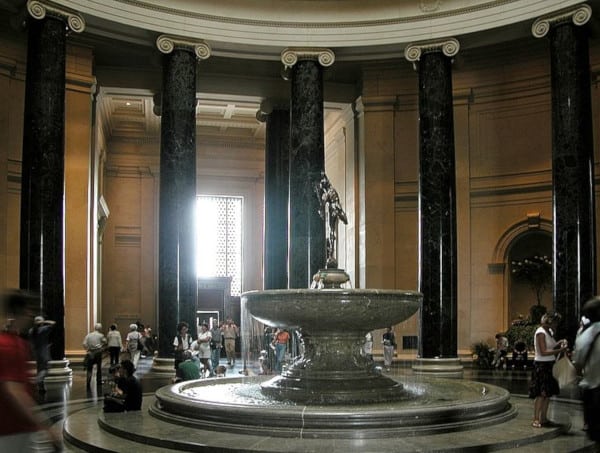
And Marriott, the third-largest hotel company in the world, has used water mist systems in their facilities since 2000. Today, Marriott’s design standards allow for these systems to replace traditional fire sprinkler systems in buildings they own or manage. Sonny Scarff, the senior director for fire protection of Marriott, goes so far as to describe some water mist technologies as “… the wave of the future.”
The cruise ship industry has also invested a great deal in water mist systems. Carnival Cruise Line—which carried more than 1 in 5 of the world’s cruise ship passengers in 2018—employs the technology. After the sinking of Carnival’s Costa Concordia and other highly publicized safety incidents aboard cruise ships, the United States Senate held a series of hearings on safety in the industry. During those hearings, Gerald Cahill, president and CEO of Carnival, described a slate of improvements to be undertaken on ships—including upgrades to higher-quality water-mist systems.
Reduced costs, lower weight, and ease of upkeep make water mist systems a popular replacement for some types of fire protection systems
The maritime industry—and cruise ships in particular—has played a leading role in the development of water mist systems. Before their adoption on land, water mist systems protected enclosed compartments on ships and, later, passenger areas on cruise ships. By reducing the amount of water required by as much as 90 percent, these systems lightened the loads ships carried, adding to the stability and fuel economy of large vessels. The technology grew in popularity at sea when, in the early 1990s, the International Maritime Organization (IMO) required passenger ships carrying more than 36 overnight passengers to install fire sprinkler systems.
Water mist systems have fared well in the maritime industry. They can attack fires at the moment of detection, minimize water damage, clean quickly, and allow ships to recharge the system using sea water. These benefits minimize the time ships spend in port.
But water mist systems have benefits for users in other industries, too. In some cases, they can replace clean-agent systems used to slow the spread of electrical fires; those that use agents such as nitrogen and carbon dioxide to safely and cleanly suppress fires. Water mist systems can do the same job with fewer safety signs, less employee training, and no need for specialized audiovisual notification systems. These and other factors combine to lower the comparative cost of water mist systems.
Water mist systems can also reduce costs when compared to dry chemical systems. Used to fight fires fueled by flammable liquids, dry chemical systems may prove difficult to clean and can damage electronic equipment. Water mist systems don’t have either of these problems. They can cost less to maintain, test, and refill. What’s more, the water they use turns to steam which doesn’t cause as much damage—or require as much cleanup—as other water-based systems. This benefit makes them especially useful for buildings with electronics and valuable artifacts, such as art museums.
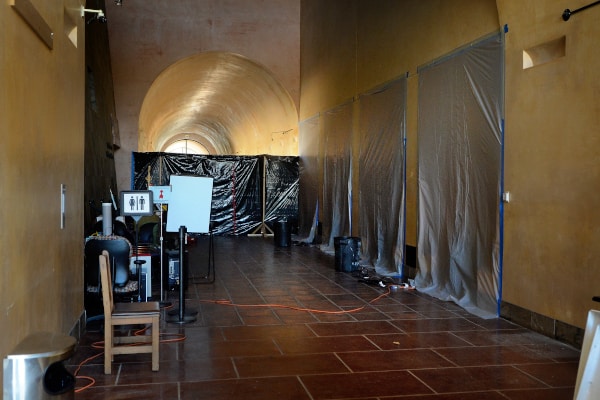
Higher installation and maintenance costs, along with restrictions in open spaces, sometimes favor traditional fire sprinkler systems
While water mist systems may reduce costs when compared with dry chemical or clean agent systems, traditional fire sprinkler systems may still have a financial edge. The savings in potential damages via water mist can sometimes outweigh this drawback, but the initial costs remain high. A construction management study of the Memorial Hospital Miramar in Miramar, Florida found that water mist systems cost over ten percent more than an equivalent preaction system to install—and preaction systems are of course more complex and expensive than standard wet sprinkler systems.
Like other fire protection systems, water mist systems require regular inspection, testing, and maintenance (ITM). However, taking care of these systems may cost more than some purchasers anticipate. Troubles with water storage tanks and releasing valves have unexpectedly increased costs for some users. Facility managers also may not have access to local ITM contractors versed specifically in the care of water mist systems. Because maintenance needs vary from one manufacturer’s product to another, facilities managers may have fewer contractors (and fewer prices) to choose from. The Memorial Hospital Miramar study found that the costs of routine maintenance reached $1,000 to $2,000 each year—roughly double that of a pre-action system.

Another drawback of these systems is that they are not as useful in open areas. In open spaces, water droplets can’t turn to steam as easily. As a result, they can’t absorb or displace heat as quickly as they need to. However, some kinds of local application water mist systems can be used in outdoor or open area applications if the system is being used for direct application on a hazard.
Water mist systems can’t fight fires involving some metals and water-reactive materials
Water mist systems can be used in the suppression, control, and extinguishment of many types of fires but they aren’t an appropriate substitute for all kinds of fire protection. Like other water-based systems, water mist may worsen fires containing materials that become dangerous when combined with water, including sodium, potassium, and other reactive substances, as a firefighter demonstrates in the video below:
As such, NFPA 750 specifically prohibits the use of water mist systems in applications where water may do more harm than good.
From the 2019 edition of NFPA 750
4.1.1.2* Water mist systems shall not be used for direct application to materials that react with water to produce violent reactions or significant amounts of hazardous products. Such materials include the following.
(1) Reactive metals, such as lithium, sodium, potassium, magnesium, titanium, zirconium, uranium, and plutonium.
(2) Metal alkoxides, such as sodium methoxide
(3) Metal amides, such as sodium amide
(4) Carbides, such as calcium carbide
(5) Halides, such as benzoyl chloride and aluminum chloride
(6) Hydrides, such as lithium aluminum hydride
(7) Oxyhalides, such as phosphorus oxybromide
(8) Silanes, such as trichloromethylsilane
(9) Sulfides, such as phosphorus pentasulfide
(10) Cyanates, such as methylisocyanate4.1.1.3 Water mist systems shall not be used for direct application to liquified gases as cryogenic temperatures (such as liquefied natural gas), which boil violently when heated by water.
Water mist systems require regular inspection, testing, and maintenance
The inspection, testing, and maintenance (ITM) requirements for water mist system are explained in NFPA 750, Chapter 15:
From the 2019 edition of NFPA 750
15.1.1 Water mist systems, other than those installed in one- and two-family dwellings, shall be inspected, tested, and maintained in accordance with NFPA 25.
15.1.2* A water mist system installed in one- and two-family dwellings shall be inspected, tested, and maintained in accordance with the instructions provided by the installer.
NFPA 750 adds that maintaining a (rarely found) water mist system in the home consists largely of common-sense practices—such as not hanging items from nozzles or painting them—and testing waterflow devices every six months.
In commercial, industrial, and large residential spaces, these systems require more extensive care. Key to these inspections are instructions provided by the manufacturer and the provisions listed in NFPA 25: Standard for the Inspection, Testing, and Maintenance of Water-Based Fire Protection Systems.
While facilities managers or building owners may conduct some limited repairs, most components require expert repair, inspection, testing, and maintenance. Floor-level tests must be conducted annually, looking for leakage, corrosion, physical damage, loss of fluid in the nozzles’ glass bulbs, aftermarket paint, or loading (covering of heads by dust). Apart from loading, which may be cleaned under some circumstances, these conditions require contractors to replace nozzles.
Water tanks must be drained and refilled annually. The system must be flushed each year. And strainers and filters must be cleaned or replaced as required or after system operation.
NFPA 25 goes into far more detail on water mist ITM and is a must-read for those working with water mist systems.
Components for water mist systems require careful selection
Water mist systems use a mix of hardware. Some parts will be familiar to installers of clean-agent extinguishing systems, while others, including high-pressure pipes and tubing, don’t get used in other fire protection systems.
It’s important to choose these components carefully—and in accordance with the rules presented in NFPA 750. QRFS offers a wide range of components for fire sprinkler systems, including corrosion-resistant CPVC fittings for low-pressure water mist systems used in light-hazard environments.
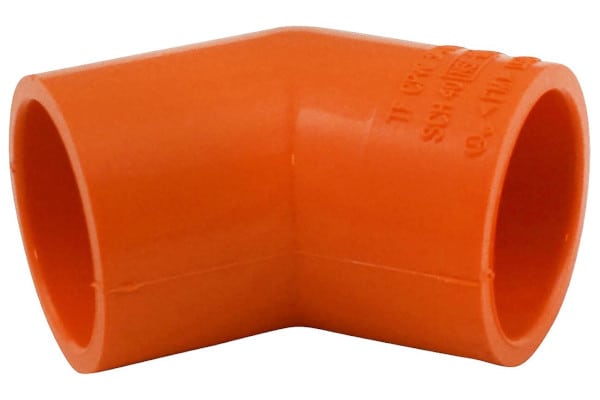
UL-listed pipe hangers are also compatible with low-pressure water mist systems and can be installed in accordance with NFPA 13. These carbon steel swivel rings may also be used with higher-pressure systems when listed for use with specific pipe sizes and weights.
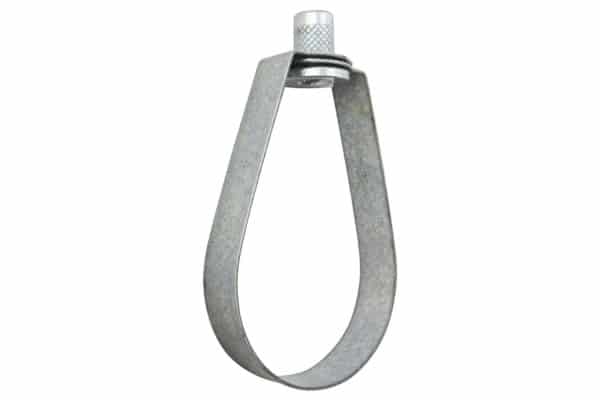
Finally, while some water mist system valves require specific listings, valves used for testing and draining water mist systems simply need to be approved by the authority having jurisdiction. For more information, NFPA 750 recommends contacting the manufacturer of the water mist system.
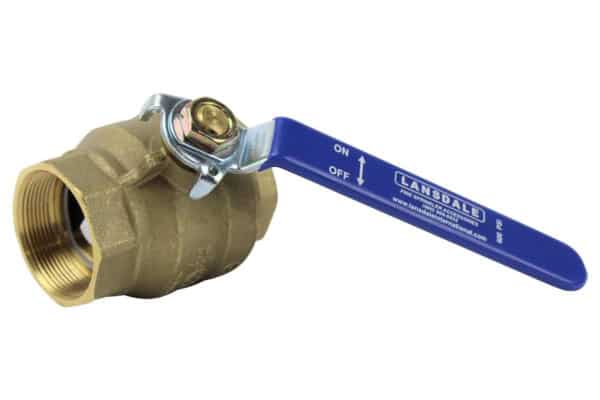
View our selection of pipe hangers and accessories, CPVC fittings, or test and drain valves.
Questions about water mist fire suppression? Having trouble finding compatible parts? Contact us to purchase other specific components at +1 (888) 361-6662 or email support@qrfs.com.
This blog was originally posted at blog.qrfs.com. If this article helped you grasp the fundamentals of water mist fire suppression, check us out at Facebook.com/QuickResponseFireSupply or on Twitter @QuickResponseFS.


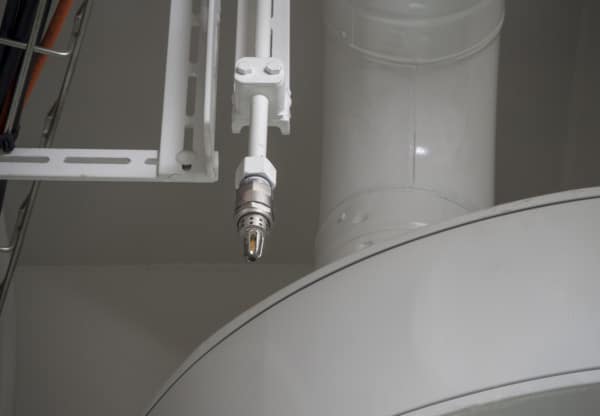
CONGRATULATIONS GENTLEMEN!
VERY USEFUL SITE!
Best regards,
James
we are an engineering company searching to engineer and purchase a water mist system to extinguish a convoyer with a surface of 100 m² ,closed nozzle (water mist system componenet and density application rate)
Hi Majdi — We do not sell water mist systems, but we write about them as helpful info for the industry. You can contact a major supplier, such as Johnson Controls, and they will at least point you in the right direction! Thanks.
To prevent a water mist sprinkler system from clogging, does the NFPA standard require the cleanest quality of water to be used to supply the system? What is the maximum size of solid particles that can pass through the nozzle?
Nanang — Unfortunately, we are not well-versed in these fine details of water mist systems, as we primarily handle traditional fire sprinkler systems. Thanks for reading.